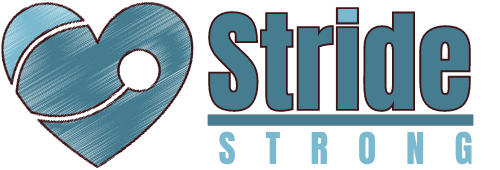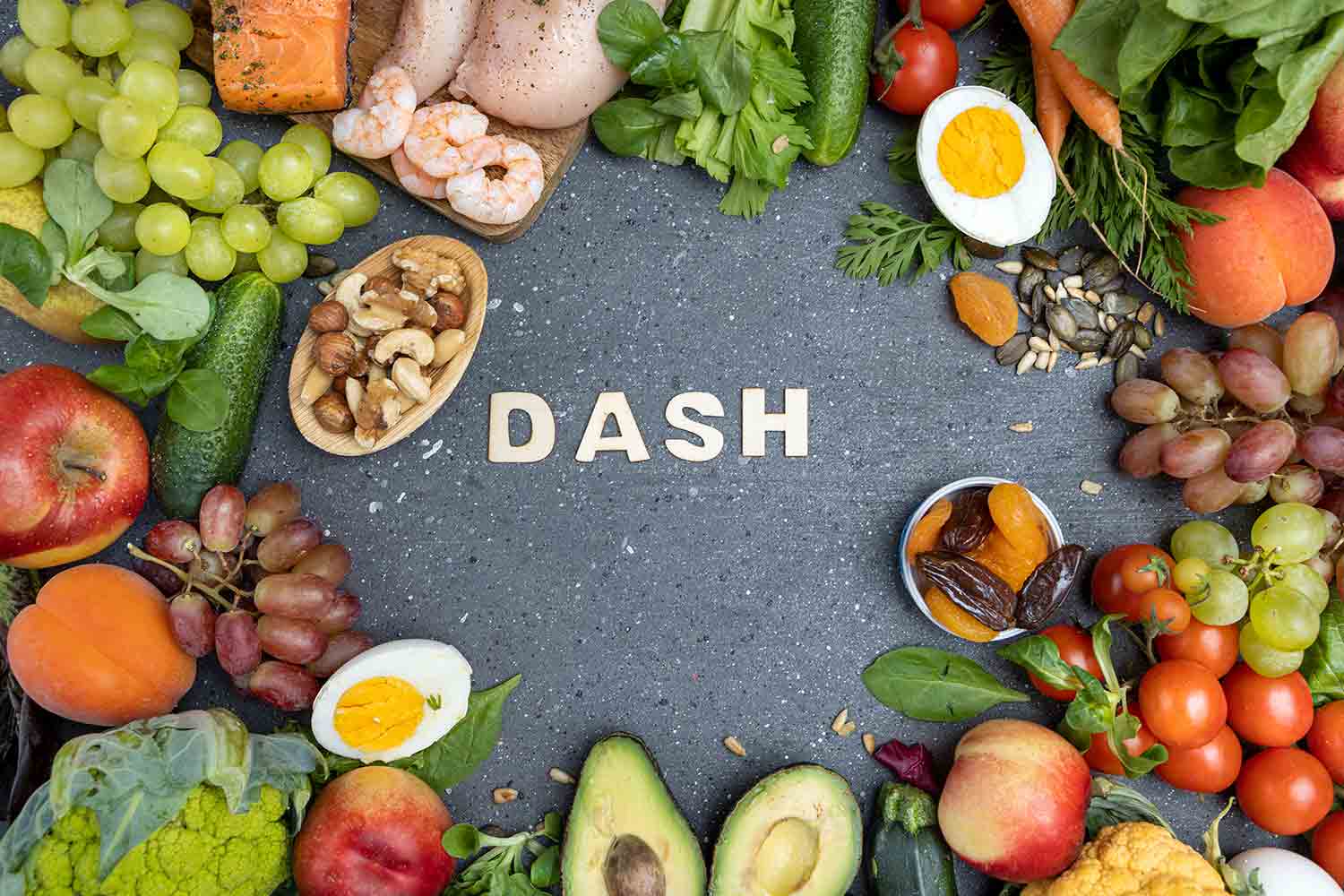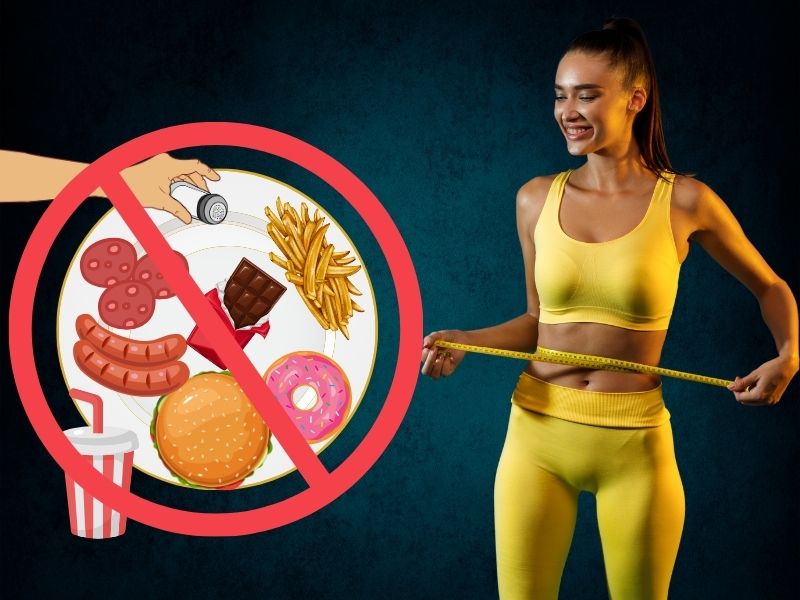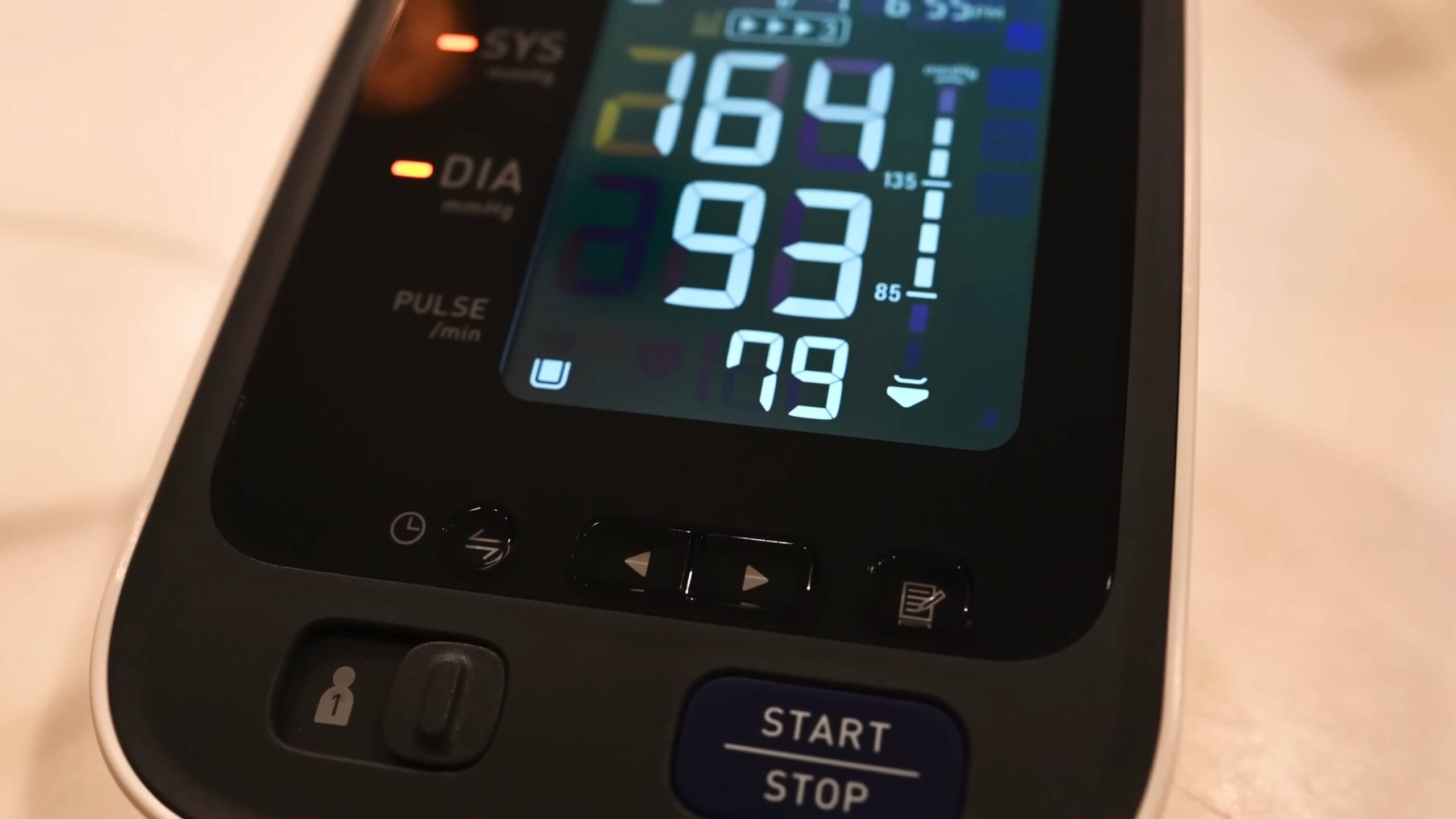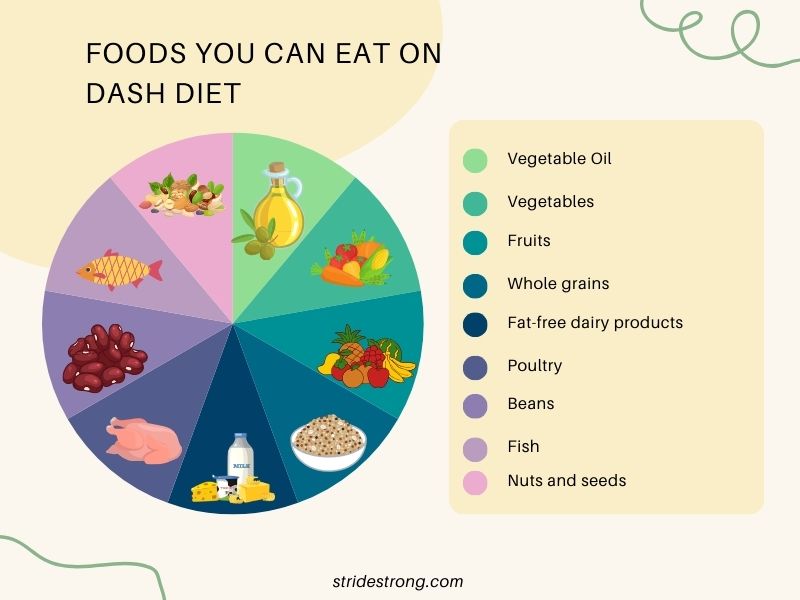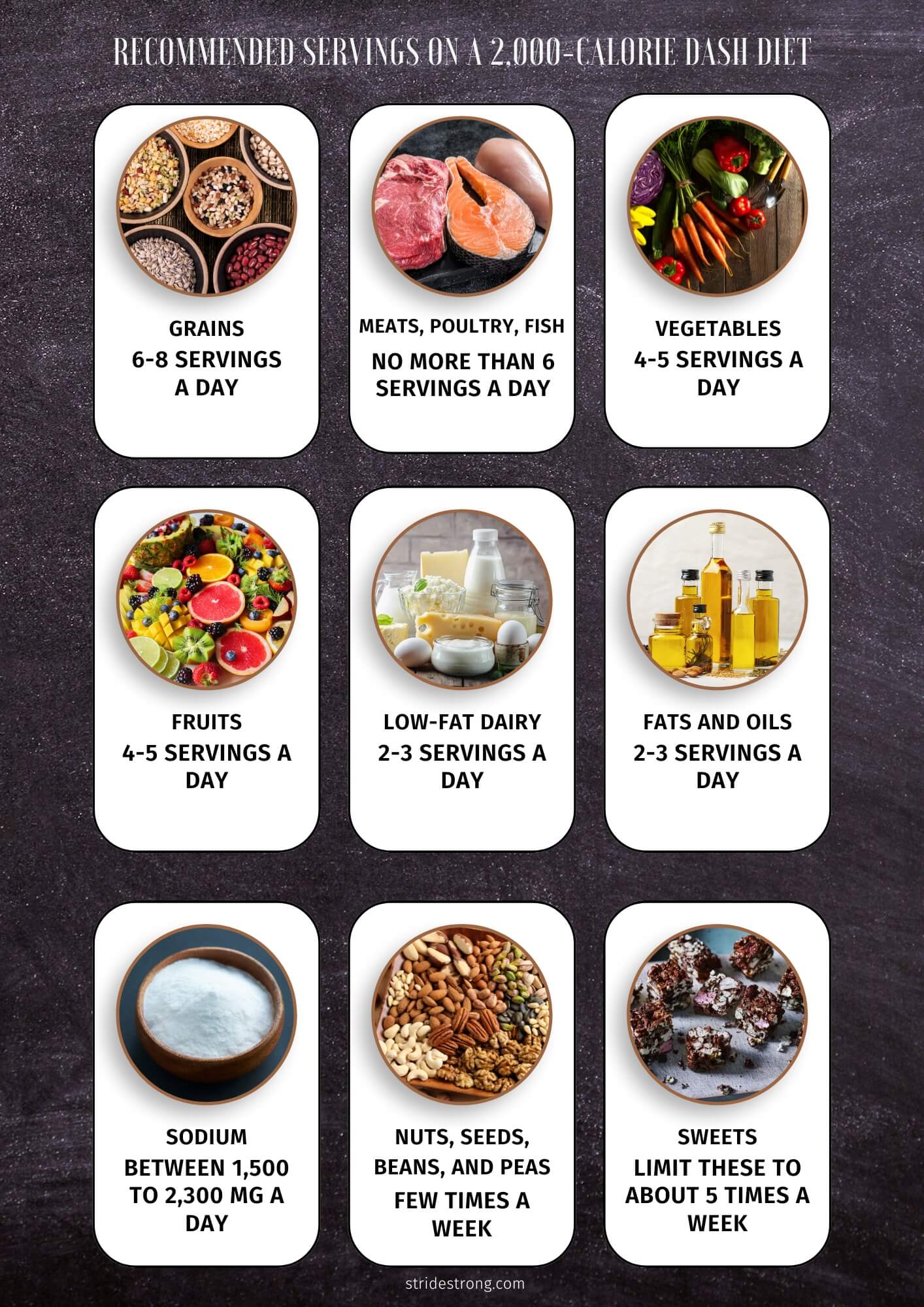I’ve been reading up on how high blood pressure, or hypertension, affects so many people.
According to the CDC, nearly half of all Americans, around 116 million, have hypertension and shockingly, only one in four has it under control.
You should know that making lifestyle changes like exercising more and eating better can really help lower blood pressure and reduce the risk of heart disease.
One effective approach I found is the DASH diet.
It’s designed specifically to combat high blood pressure by limiting sugars, saturated fats, and sodium, and focusing on foods that are good for the heart like fresh fruits and lean proteins.
It’s highly recommended and was even ranked as the second-best diet in 2023 by the US News and World Report, just after the Mediterranean diet.
I’m going to break down now some of its benefits.
1. Potential Weight Loss
The DASH diet contributes to weight loss, according to research of the National Heart, Lung, and Blood Institute.
This effect could stem from its restrictions on sugars, trans fats, saturated fats, and sodium.
Additionally, adhering to a daily calorie target and eliminating certain foods from your diet can naturally lead to a reduction in calorie intake, which may further support weight loss efforts.
2. Good For Type 2 Diabetes
Research indicates that nearly two-thirds of individuals with diabetes also suffer from high blood pressure. Amy P. Campbell
Given that the DASH diet is tailored for those with hypertension, it naturally extends benefits to those who have both diabetes and high blood pressure.
Study of Leila Azadbakht, including one notable randomized trial, have shown that the DASH diet can positively impact blood pressure, blood lipids, and even reduce A1C levels, which measure blood glucose over the previous three months.
A follow-up study highlighted that fruits and vegetables were particularly effective in lowering blood pressure among individuals with type 2 diabetes.
3. Good for Blood Pressure and Overall Health
A study by P. R. Conlin comparing the typical American diet, an American diet enhanced with fruits and vegetables, and the DASH diet revealed that participants following the DASH plan experienced lower blood pressure than those on the other diets.
Further research from this trial indicated that DASH dieters not only reduced their blood pressure but also achieved lower levels of LDL (“bad”) cholesterol.
The DASH diet’s restriction on salt intake leads to decreased plasma sodium levels, which are associated with lower blood pressure.
Recent findings suggest that adhering to the DASH diet may also lower all-cause mortality, particularly deaths related to heart diseases caused by high blood pressure and cholesterol. Sepideh Soltani.
4. Foods You Should Limit on DASH Diet
In my experience, it’s been important to cut down on sodium and to steer clear of saturated and trans fats.
Here are some of the foods I try to limit:
- Fatty meats like ham, bacon, sausage, and steak
- Full-fat dairy products
- Sugary drinks
- Candies and other sweets
- High-sodium items, such as canned foods, packaged snacks, microwavable meals, deli meats, and certain condiments
5. My Go-To Foods
This diet doesn’t lock you into eating specific foods daily or restrict entire food groups like the Atkins diet does.
What I appreciate about it is its flexibility, provided you stick to the recommended serving sizes.
Here are the types of foods I focus on in my DASH diet:
- Fruits
- Vegetables
- Whole grains
- Low-fat or fat-free dairy products
- Fish
- Poultry
- Beans
- Nuts and seeds
- Vegetable oils
When it comes to drinks, most are okay, but I make sure to steer clear of sugary beverages to keep in line with the diet’s guidelines.
6. How Should You Follow the DASH Diet
Starting the DASH diet was pretty straightforward for me. It mainly involves four things: figuring out how many calories I need each day, following suggested serving sizes, eating the right foods, and getting regular exercise.
First, I calculated my daily calorie needs. I took into account my current weight, age, gender, height, and how active I am.
I also considered my goal weight, but since I’m not looking to lose weight with DASH, I used my current weight. There are plenty of tools online where you can input these details to get your daily calorie needs.
Once I had my calorie target, I looked at the recommended servings from different food groups for my plan, which is about 2,000 calories a day. Here’s what I aim for:
- Grains: 6-8 servings a day
- Meats, poultry, fish: No more than 6 servings a day
- Vegetables: 4-5 servings a day
- Fruits: 4-5 servings a day
- Low-fat dairy: 2-3 servings a day
- Fats and oils: 2-3 servings a day
- Sodium: I keep it between 1,500 to 2,300 mg a day
- Nuts, seeds, beans, and peas: A few times a week
- Sweets: I limit these to about 5 times a week
For exercise, I make sure to get at least 30 minutes most days, aiming for about 2.5 hours of moderate activity weekly. If I were trying to lose weight, I’d push for about 60 minutes daily. This routine has helped me manage my diet and stay active.
7. Is It For You?
Nutrition expert MS. RD. Melissa Mitri says that this diet would benefit most people’s health, especially those with high blood pressure since too much salt can worsen this condition. While this may not be the case in every person with high blood pressure, a good percentage of those with high blood pressure would benefit from a lower sodium diet.
The only cases where this diet may not be appropriate are those with high potassium levels, such as people with kidney disease who have trouble filtering potassium out of their blood. Since this diet is high in potassium, it could raise potassium levels further and cause further kidney damage.
Related Posts:
- Cycling 1 Hour a Day Weight Loss - What You Should Know
- How to Start Working Out (Consistently)
- "Plan your meals ahead"— Expert Nutritionist Gives…
- Does the Military Diet REALLY Work? (Yes, But Don't Do It.)
- The Benefits of Outdoor Exercise - Why You Should…
- Can You Get Abs While Bulking? Yes, it's Possible!
